Replacements to Canon’s key lenses are always major events, and for many photographers Canon’s EF 35mm f/1.4L has been one the top go-to lenses for some time. It was beloved for its beautiful “drawing” (look of the images) and accurate autofocus. It did have some drawbacks, however, most noticeably in fairly pronounced chromatic aberrations along with lower resolution at wide apertures than some newer competitors. The biggest threat came from a surprising source – third party lens maker Sigma, who launched their new Global Vision and their “ART series” with a 35mm f/1.4 of their own. That lens got a lot of publicity due to having (at the time) class leading resolution and a beautiful lens design. A great price didn’t hurt. It was introduced at $899 while the Canon 35L was closer to $1500. Suddenly it was entirely acceptable for professionals and amateurs alike to own a Sigma, and the success of the 35A (Sigma 35mm f/1.4 ART) helped launch a whole series of lenses in the ART line since. But Canon has finally struck back, and the Canon EF 35mm f/1.4L II USM manages to raise the bar once again in almost every category.
I will be using the Sigma 35A as a comparison point throughout this review, and will publish a separate review of it with the Canon 35L II as a point of reference. One area where Sigma is certainly not threatened is in the matter of price; the Canon 35L II launches at a painful $1799 in the US market. That fact alone will assure that Sigma will continue to have a market for their flagship ART lens, through Tamron’s new 35mm f/1.8 VC prime lens may put some pressure from below on them as well. But for the purpose of this review there is a key question that must be addressed: is the Canon 35L II worth twice as much as the Sigma 35A? Read on to find out!
If you prefer to watch your reviews, here is my video review:
Build Quality
The lens is surprisingly large and heavy. It grew nearly 20mm over the first generation in overall length and put on a substantial 180g. The engineered plastic outer shell feels familiar, but the sheer heft and density of the lens does not. When holding it in the hand it feels a little front heavy – a lot of the heft is forward of center. I quickly adjusted to it, but the lens had a unique feel in my hand. The rubberized focus ring is nice and wide and falls quickly to hand. The damping is nice but not exceptional. Roughly 145 degrees of rotation – not as much as recent Tamron primes, but far more than the Sigma 35A. The dense feeling is explained by Roger Cicala’s tear-down, which reveals that the lens is more heavily engineered than any prime he’s seen before.
The extra care can be seen at the rear of the lens. Moving the elements forward on many lenses often reveals exposed electrical contacts or unsealed space. The 35L II glides forward and reveals a tightly engineered inner barrel with very small tolerances. There is no “easy access” into the inner workings of the lens when the lens is focused towards minimum focus distance. Both the front and rear elements have also received fluorine coatings to repel dust and liquids. This makes a very practical difference in the ease of cleaning these surfaces as well. This is a significant advantage for the Canon EF 35mm II as neither the original EF 35L or the Sigma 35A have any kind of weather sealing. The new Tamron 35 VC does, but the Canon probably tops its overall degree of sealing. Photojournalists, sport shooters, and event photographers typically prefer gear that can handle some adverse weather, and the 35L II is certainly built with that in mind.
I’m a little surprised by the 72mm front element. This was very common for Canon’s previous generation of primes (35/50/135), but there seems to be a lot of prime lenses in recent years that are either 67mm or 77mm (Sigma ART is 67mm, as is Canon’s 35mm f/2 IS and the Tamron SP 35mm f/1.8). The 72mm is great if you invested in filters for the previous generation of Canon L primes, but there are few other modern lenses that share a 72mm filter thread.
Here’s a look at the raw numbers:
| Lens | Sigma 35mm f/1.4 ART | Canon 35mm f/1.4L II | Canon 35mm f/2 IS |
| Price (at time of review) | $899 | $1799 | $549 |
| Overall Length | 94mm | 105.5mm | 62.6mm |
| Overall Weight | 665g | 760g | 335g |
| Front Filter Thread | 67mm | 72mm | 67mm |
| Elements/Groups | 13/11 | 14/11 | 10/8 |
| Min Focus/Max Mag | 30cm/.20x | 28cm/.21x | 24cm/.24x |
| Aperture Blades | 9 | 9 | 8 |
There is only one switch on the lens, and it is an AF/MF switch. Full time manual override is available at any time, though, just grab the focus ring and twist. There is a focus distance window with very minor hyperfocal markings (f/11 and f/22). The minimum aperture is f/22 for the lens.
I continue to think of Sigma’s ART series lenses as being some of the most handsome on the market, and in a side by side comparison I do prefer the look of the Sigma over the Canon. The Canon perhaps suffers from familiarity; it is new and improved inside, but externally looks like a few dozen other Canon L lenses. One other positive for the Sigma over the Canon is in the inclusion of the nice, padded case for the Sigma. The Canon EF 35mm gets the familiar “padded sock”, of which I’ve got quite a few in drawer. My question is this: is anyone actually using these? Surely a nearly $2000 lens deserves a better nod at protection. Lowepro makes some great lens cases that will provide much better protection value.
Autofocus
My first act when receiving any new autofocus lens is to spend some extended time calibrating the lens to the body/bodies I intend to use it on. For this purpose I use the FoCal 2 program from Reikan. My typical process is to run the automatic calibration at least three times (I’m looking for a repeatable result) and I then follow up with a semi-automatic calibration where I take a closer look at the figure or figures that the automatic calibration produced. I will check results to either side of these figures to see if there is a better one. This allows me to both eyeball the actual focus results and ensure that I have the most consistent focus setting.
AFMA Notes:
Canon AFMA – Automatic calibration returned results in the +2 and +3 range. Closer examination through the semi-automatic calibration mode confirmed a +2, though there was a bit more inconsistency than I expected.
SIGMA AFMA – Automatic calibration gave inverse results (-2 and -3 range). Slightly more inconsistent results, but I settled on the -2 figure after semi-automatic calibration.
Throughout the period of my review I used the lenses in a variety of settings, from general purpose shooting to events (church, school, and family) along with some portraits. While impossible to encompass every type of shooting situation in a 4-5 week period, I feel that I used the lenses in enough of a variety of settings to be confident in my findings.
One of those events was at my children’s school. It was a “Duct Tape Fashion Show”. The 7th and 8th grade classes had fashioned various costumes and clothing items out of duct tape and paraded them up and down the “runway” in the gym. I used both lenses back and forth on the same camera body (the body they were calibrated to). I primarily shot in AF Servo mode, as the kids were always moving and rarely stopped long even when they were posing. As the official photographer for the event I was set up right at the end of the “runway” and kids came in from the far end of the gym, up the center aisle to me, then split to either side, quickly posed, and then retreated back the way they came. I shot 57 frames on the Sigma and 113 on the new Canon – all wide open at f/1.4. I used the lenses identically when shooting with the intent that I would compare frames at the end of the shoot and determine which lens had the higher hit rate.
I went through and counted 9 improperly focused shots from the Canon (out of 113), for a hit rate of around 92%. Most of these misses were with the subjects right on top of me and weren’t in situations where I would have expected to get good results. There were about 2-3 obvious misses where I would have expected accurate focus to be possible. This raises the keeper rate to better than 98% – very good under the circumstances I was shooting in.
The Sigma was another story altogether. I counted at least 15 missed focus shots, including almost all of those beyond 20 feet. My hit rate was highest when the subjects were in the range of 5-10 feet (the lens was calibrated at a six-foot distance). The keeper rate with the Sigma dropped to under 64%. If you intend to shoot events, sports, or photojournalism, the Canon proved the much more reliable option in this scenario…and that might be worth the premium price in and of itself. If you need to shoot this style and can’t afford the 35L II, I might recommend considering the 35mm f/2 IS instead. It has a slower aperture, yes, but it has an image stabilizer and similar full ring USM focus that is extremely fast and accurate. I’ve used it for a couple of years and it has proven one of my most accurately focusing lenses.
Purchasing Sigma’s USB dock might help somewhat with this, as it allows you to calibrate the lens at difference focus distances, but the various reports that I have received over the years suggests that even this doesn’t always solve the problem.
Thus far I have not found any third party lens that focuses quite as fast as the best Canon USM lenses. Large aperture primes have to move a lot of glass, and I find that Canon not only does the best job of producing speed but also the best job of masking how much effort is involved in quickly moving those elements. Sometimes with Tamron and Sigma lenses I find that major focus shifts involve a sound and sense of “sliding” as the elements move into place. There is no such feeling with the Canon 35L II. It just moves into focus virtually instantly. There is no hunting and no hesitation; just aim and lock focus. It works extremely in AF Servo mode as well. The Sigma is fast, for the most part, but there is a little pause while inertia builds when going from minimum distance focus back out to infinity.
It’s interesting to me the very different approach that Sigma and Tamron have taken with dealing the challenge of focus with large aperture primes. The Sigma 35mm f/1.4 ART has a large aperture and quite fast focus but at the expense of having a very small focus throw. It barely has 90 degrees of focus throw, and the distance between 6 feet and infinity is TINY on the focus ring. It makes manual focus very difficult and even makes me wonder if this doesn’t contribute to the lens’ somewhat poor focus accuracy in that range.
The Tamron SP 35mm f/1.8 VC takes a different route. First, it has a somewhat smaller aperture (and thus a little less glass to move), but it adds a much bigger focus range with a good 180 degrees of focus throw (basically double that of the Sigma). The Tamron takes a perception hit in its overall focus speed (which is just a tiny bit slower), but the trade off is that you can both manually focus and autofocus with a bit more precision. This is even more pronounced in the 45mm VC vs. the Sigma 50mm f/1.4 ART. Which approach is better? The answer will probably change from photographer to photographer.
The Canon 35mm f/1.4L II is focus king in this category. It doesn’t have quite the focus throw of the Tamron (my favorite of the trio to manually focus), but definitely has the tops in focus speed and accuracy when autofocusing while still including a relatively long focus throw.
If you lean towards shooting more video than stills, the Tamron is a good choice as it has the best manual focus ring (by a good measure), longer focus throw, and adds an effective image stabilizer to the mix.
Some people find that the Sigma 35A works just fine for them; others have given up despite its impressive optical performance. I have now spent time with the 35A, 50A, 18-35A, and 24-35A lenses, and my own experience has been a mixed bag. The 24-35A performed the best for me overall, and the 50A did well in spurts, but my own conclusion is that autofocus accuracy continues to be Sigma’s Achilles heel. I strongly want them to solve this issue as they really are designing lenses with very impressive optics. At the moment, however, there are no Sigma lenses in my personal kit as I don’t feel like I can rely on the autofocus for professional usage. As the saying goes, however, “your mileage may vary”. Sigma’s USB dock makes a difference, but doesn’t always solve the problem entirely.
In conclusion, if you are a professional and need the best, most accurately focusing 35mm lens, the Canon 35L II is the new top choice; the Sigma isn’t even close.
On a Crop (APS-C) Camera
This is obviously a very expensive lens to buy just for a crop sensor (APS-C) camera, but the performance of the lens on a crop sensor both optically and in terms of the autofocus is exemplary. In this brief video I take a look at the experience of using the 35L II on both a Canon EOS 70D body along with a Canon EOS M3 via the EF adapter.
Image Quality
Step over, Sigma, because there is a new King on the throne. The Canon EF 35mm f/1.4L II is the new resolution class leader!
My first real outing with the 35L II was somewhat revelatory. Perhaps it was the fact that I was shooting in similar conditions to when I was testing the Zeiss Otus 1.4/85mm last year, but I came home and began looking at images that felt quite “Otus-like”. While I recognize that lenses like this are going to be used at a variety of apertures by end users, I tend to test lenses like this primarily at apertures wider than f/2.8. The reason being that it is in this zone where prime lenses really need to show their worth. The reality is that a number of modern zoom lenses are already excellent at their wide open f/2.8 aperture, so a modern prime really needs to shine at even wider apertures to justify its existence. The 35L II is virtually the same size as Canon’s 24-70mm f/2.8L II (7mm short and 45g lighter), and it costs only $100 less. That lens is largely acclaimed as being optically awesome, so the 35L II needs to justify its existence between f/1.4 and f/2.8.
It does.
There is no real reason to step the lens down to improve image quality – only to increase depth of field. Even landscape type images look excellent at f/1.4, and that, in my experience, is reserved for just a few elite type lenses. There is just no evidence of that hazy, indistinct look of some wide aperture primes wide open. Resolution is crisp, contrast is strong, and image quality is generally excellent. Check out this landscape shot at f/1.4 and the crops from across the frame:
I took the shot above from a high promontory so that I could get a fairly flat plane of focus wide open. The detail on the distant pines is impressive. That amazing detail shows up in close focus shots as well:
That wonderful combination of excellent sharpness along the plane of focus and then soft fall off to defocus is fairly unique. It oozes quality. It seems that everything I shoot with the lens just looks a little extra special.
I also find that the images I’m getting from the 35L II really process well. I’m enjoying spending time adding polish to them and producing final results that I’m very glad to add to my portfolio. Here’s a few from along the way:
The new Canon 35L II is expensive, but when you consider it as an autofocusing, weather sealed Otus, it seems much cheaper!
The following day I went on an extended nearly 10 kilometer hike through a misty forest with the Sigma 35mm f/1.4 ART. The conditions for photography were unquestionably better than my day out with the Canon, and, while I came home with some fantastic images, they lacked the wow factor of the Canon. Yes, this is a “perception thing” that is hard to demonstrate on charts, but I write as an experienced photographer who has used a very large variety of lenses. Above all I think this boils down to the brilliant optics being let down by inconsistent focus. Shooting at wide apertures really puts the onus on the focus system. The difference between a brilliant image and a mediocre one is as simple as that pinpoint focus being nailed. The Canon produced one hit after another, but the Sigma wasn’t nearly as consistent.
I also didn’t feel that the Sigma produced the same degree of microcontrast as the Canon. What I mean by this is that when zoomed into a pixel level there is a higher amount of contrast and less chromatic aberrations in the details of the Canon’s images which results in the appearance of higher resolution. At f/1.4 the Canon is definitely resolving higher, and, as a result, the lens is just that much more special. I also feel like the Canon is transitioning to defocus more nicely. It’s rendering is more “magical”.
With either lens I was reminded of how much I enjoy the 35mm focal length as a walkabout lens. It seems to be “just right” for a number of things, and whether in the woods or on the city street the 35mm focal length seems wide enough for most everything without adding distortion. It is the “Goldilocks” focal length: not too close; not too far. For that matter, I also prefer the versatility of a wide aperture to that of a moderate zoom range. The ability to shoot most anything at f/1.4 (if you want that narrow a depth of field) gives you a lot of flexibility as to how you choose to frame a scene. In some instances, a shot of a scene with a narrow depth of field is interesting where it might just be busy with more depth of field.
I wasn’t just impressed with the Canon EF 35mm f/1.4L II when out in the woods, but wherever I used it the results were just excellent. I used it at church, in portraits, to chronicle our holiday celebrations, and for a few creative projects. It just delivered…period. The rules of the internet seem to imply that everyone who buys a new lens must take a picture of a cat with it, so here are some of my contributions to the taking of cat and dog pictures with expensive lenses!
Canon has done a great job of seriously upping the resolution of the lens without destroying the beautiful drawing and character that the first generation of the lens had, and that is no small accomplishment. You can view many more samples in the Canon EF 35mm f/1.4L II Image Gallery. Read on to see some of the “voodoo” they used to accomplish it…
Blue Spectrum Refractive Optics
The Canon EF 35mm f/1.4L II USM’s biggest marketing buzz centered around a completely new kind of element in the optical formula which Canon calls “Blue Spectrum Refractive Optics” or BR Optics for short. This special organic material gives a greater control over reducing axial chromatic aberrations than any substance before, and is at least partially responsible for the amazing image quality. There are almost no chromatic aberrations, period, which is a noticeable improvement over the first generation of the lens. The image quality, is, well, awesome, and if the BR Optics are responsible for that, then bless them!
The lack of chromatic aberrations are at least partly responsible for the excellent resolution and part of the reason why the lens reminds of a Zeiss Otus in so many ways.
The only real fly in the ointment optically is the very heavy vignette. It isn’t exceptionally bad (the Sigma 35mm f/1.4 ART and Canon EF 35mm f/2 IS are roughly the same, although the new Tamron SP 35mm f/1.8 VC blows them all away in this area). My objection is more because there is a mild regression compared to the first generation of the lens and I have to wonder that if they had migrated to a 77mm front element they could have eliminated a fair bit of this. I find that the vignette is very visible in a lot of standard general purpose shots (particularly if I’m shooting JPEGs and not applying a standard profile in Lightroom). While vignette is to be expected in a wide aperture prime, it just seems like they could have done better. This lens’ high price point holds it up to higher scrutiny to less expensive options. Those shooting video may have cause for concern at wide apertures.
I was also less than amazed at the flare resistance. I had a chance to shoot in highly directional sun while visiting the Mer Bleue conservation area in Ottawa, Ontario, Canada. This is one of the most studied bogs in the world, and provided some very unique shooting opportunities. The setting sun was both intense and very directional; a perfect storm for testing flare resistance. Neither the Sigma 35mm f/1.4 ART nor the Canon 35LII really impressed me; I’ve seen much better performance from both the Canon 35mm f/2 IS along with the Tamron SP 35mm f/1.8 VC. Neither lens has as wide an aperture, true, but both are genuine competitors that performed better in this regard. The 35L II retained somewhat better contrast (the Sigma veiled a bit more), but both showed a bit more ghosting artifacts than what I would like – and those can be very difficult to remove in post. I don’t mind a bit of veiling (it often creates a stylish effect), but ghosting artifacts can ruin an image.
The Sigma had slightly better defined sunbursts than the Canon if that is big deal to you, though both are pretty decent.
One final note is that the 35L II turns in a quite good coma performance, so it is a viable option for shooting the night sky.
Bokeh Quality
One of the single best qualities of the Canon’s performance is in the bokeh transition performance. The lens really transitions from focus to defocus beautifully, and produces a very creamy bokeh region when shooting at close distances that produces stunning subject isolation. The nature of the focal length means that this will much less pronounced when the subject is further away, but the quality is overall very nice. I got a lot of very “high end” photos that look, well, expensive, which is appropriate in this case.
I did a controlled test to compare the quality of the bokeh highlights. The subject (an old 35mm f/3.5 Super Takumar lens) was 17” from the sensor. The bokeh highlights (Christmas tree lights) were about seven feet beyond. I lit the foreground with a Metz 64 AF-1 flash through a Lite Genius Super-Scoop II and bounced off a wall behind the camera. I used mirror lockup, 2 second timer delay, Live View 10x focus, and Rear Curtain sync to produce the smoothest light falloff result. I determined that I best liked the look of the image with a ¾ stop underexposure by the camera’s meter. For what it is worth, the Sigma needed a bit more light according to this metering method, so there is a minor variance in exposure values. I expect that DXOmark or others who measure the lenses T-stop performance will find a shade better performance for the 35L II. The 35 f/2 IS, which I also used in this comparison, had a t-stop value equal to its f-stop (f/2), while the Sigma 35A clocked in at a t-stop of f/1.6, which is actually fairly decent compared to earlier generation competition.
When comparing the Sigma 35A and Canon 35L II side by side at a wide open f/1.4 aperture it is actually surprising how similar the bokeh highlights looked. The shape of the highlights is roughly the same, and while there is just a hint of additional busyness in the Sigma’s highlights, that is only detectable at 1:1 pixel level. The Canon shows a slight bit more concentric rings while the Sigma shows more of a pattern. As you move away from the center of the frame both lenses show a tendency towards lemon shapes instead of circles – a pretty common phenomenon. At identical exposure the Canon’s image is noticeable brighter, but probably no more than a quarter stop.
Stopping down to f/2 helps correct the lemon or cat-eye shape, but also further accentuates the signature of both lenses. The Sigma is bit more “patterned”, and the concentric circles are slightly more defined on the Canon. The Sigma does a slightly better job of retaining circular shape, with the Canon showing the first hints of the shape of the aperture blades.
Little changes at f/2.8, although now both lenses show the slight shape of their aperture blades at a 1:1 level to a similar degree.
By f/4 both lenses are producing highlights looking more “nonagonal”. The shape of the aperture blades is now clear, though the result is far less objectionable than the odd shape of the old 50mm f/1.8 and its five blades. There is also far more light bleed around the edges of the shapes, but roughly at an equal level from both lenses. Ditto at f/5.6, just a step further. Here is a series from the Canon from f/1.4 to f/5.6:
Here is the same series from the Sigma:
The Canon 35 f/2 IS has perhaps the smoothest bokeh of any of the 35mm options, but I don’t see a major advantage in this kind of testing – and that bodes well for both these lenses. The bokeh highlights from 35IS look remarkably similar to those of the 35L II. While I don’t have the new Tamron SP 35mm f/1.8 VC on hand for this comparison, I did a similar test a few months ago and did add the Tamron SP 45mm f/1.8 VC which I had on hand to the test as another point of comparison. The longer focal length of the Tamron means that the size of the bokeh highlights are larger, but the bokeh highlights are also noticeably busier than any of these other contenders. Most Tamron lenses I have tested have shown a tendency towards the phenomenon often called “onion bokeh”, though the 45VC also shows the reason why its bokeh looks so nice in most other situations – the inner line of the bokeh circle is nice and soft and thus produces bokeh without hard edges.
Both the Sigma and the Canon 35L II will produce less busy highlights than the Tamron 35 VC when bright light sources are in the scene.
Where the Tamron will win over all of these is in the amount of bokeh it can create in some situations due to being to focus much closer and having a maximum magnification figure near twice that of Sigma (.40x).
I would encourage you to judge the quality of the bokeh from any of these lenses based more on real life usage rather than any isolated test. Bokeh quality is always a subjective thing, and most all of these lenses produce very good real world results.
I will say that I highly favor the “look” of the images coming out of the 35L II – they are definitely special. I find the transition from [very sharp] focus to defocus very smooth. The overall “drawing” of the lens is very, very good. While this test does little to determine the cause of that, the lens certainly performed well here.
In Conclusion:
Canon has continued its recent trend of delivering premium lenses at a premium price with its “L” lens releases. The high point of entry for the Canon EF 35mm f/1.4L II USM will be discouraging to many prospective buyers who will content themselves with the almost as excellent Sigma 35 ART, Canon 35 IS, or the Tamron 35 VC. The 35L II is a cut above, however, and sets the new standard for excellence in the 35mm focal length. It is razor sharp, has exceptional autofocus performance in both speed and accuracy (not something the Sigma can claim), and delivers beautiful, professional looking results. It also raises the bar for a Canon prime lens in its construction and degree of weather sealing. It is a genuinely professional grade lens that is designed for demanding use and will quickly become the new 35mm lens of choice for photo journalists, sport shooters, and wedding/portrait photographers. It is designed to be take advantage of high resolution sensors like those on the 5Ds/5DsR. Its shortcomings are confined to heavy vignetting and somewhat unimpressive flare resistance. It also effectively pioneers an impressive new Canon technology (BR Optics) that is sure to make its way into many of Canon’s new higher end lenses.
The 35L II is expensive, yes, but in an age where the Zeiss Otus lenses are commanding prices north of $4000, the 35L II represents a more attainable kind of excellence. For some it will unquestionably be worth the price tag double that of the Sigma, while others will decide that the Sigma’s almost as good optical performance makes the Canon’s price of entry too high. Decisions, decisions.
Pros:
- Sets the new standard for optical performance at the 35mm focal
- Sets the new standard for build quality in a standard prime
- Has advanced weather sealing
- Blue Spectrum refractive optics live up to their billing
- Has unique blend of sharpness and beautiful drawing
- Fast, accurate AF that leaves the Sigma in the dust
- Manual focus ring has a good amount of focus travel
- Takes fantastic pictures
Cons:
- Fairly heavy vignette
- Flare resistance could be better
- Bigger, heavier, and more expensive than previous generation
- Expensive (deserves a second mention)
Alternatives:
If you can’t afford the new King, here are a few still royal alternatives.
The original Canon 35mm f/1.4L USM remains an excellent lens and the release of this new lens has helped drive down the price on it to a more reasonable $1099. It lacks the weather sealing of the new lens, has more chromatic aberration, and has older focusing algorithms but is still a solid choice if your budget doesn’t extend all the way to the new lens.
I reviewed the new Tamron SP 35mm f/1.8 VC a few months and was very impressed by it. It has a somewhat smaller aperture value (f/1.8) but offers up a professional grade, weather sealed build quality, great optics, and adds an image stabilizer to the mix. It also retails for a third of the price of the 35L II. It is not as great as the Canon, but is a solid alternative if you budget can’t handle the more expensive Canon.
The Sigma 35mm f/1.4 ART referenced in this review continues to be a solid budget alternative to the 35L II with nearly as good optical performance. It is held back somewhat by focus issues, but there are many delighted users of the lens. It retails for half the price of the 35L II and is hard to ignore.
The Canon 35mm f/2 IS has a slower aperture but has great focus, a wonderfully compact size, and a very effective image stabilizer. It is a bargain at $549.
Review notes: I reviewed retail copies of both the Canon 35L II and Sigma 35A provided to me by the great people at B&H Photo .
Gear Used:
Canon EOS 6D DSLR Camera (Body Only)
Canon EF 35mm f/1.4L II USM Lens
Sigma 35mm f/1.4 DG HSM ART Lens
Adobe Lightroom CC Software for Mac and Windows (Boxed Version)
Adobe Photoshop Creative Cloud 1-Year Subscription
Alien Skin Exposure X (Use Code “dustinabbott” to get 10% anything and everything)
Purchasing your gear through B&H and these links helps fund this website and keeps the articles coming. Thank you for your support.
Great News! I can now offer a 5% discount on all purchases at Amplis Foto, Canada’s Leading Photographic Supplier. Please enter discount code: AMPLIS52014 in your cart. It is good for everything in your cart, and is stackable with other coupons, too! It will take 5% off your entire order! Proceeds go towards keeping this site going and providing you with new reviews!


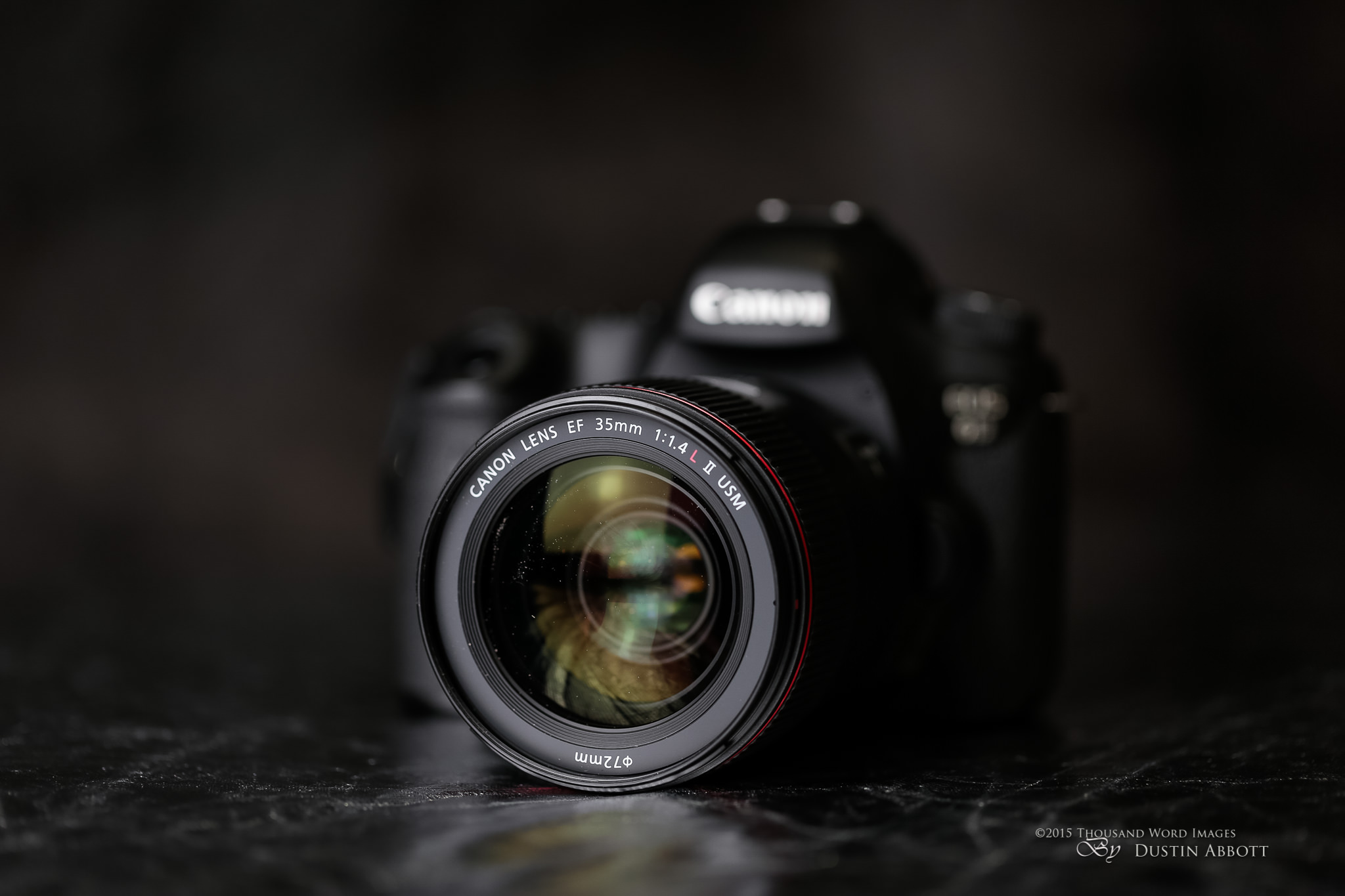
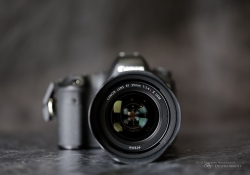
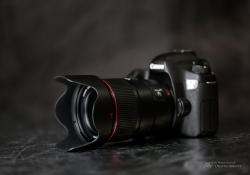
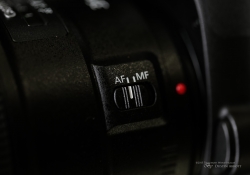


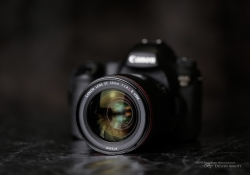
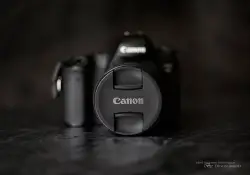
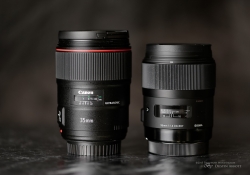

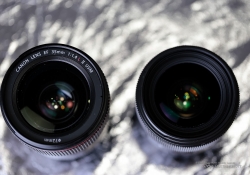
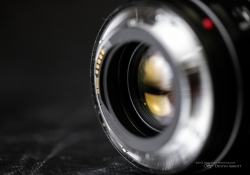
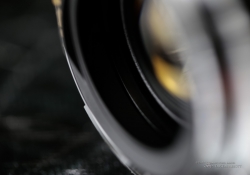
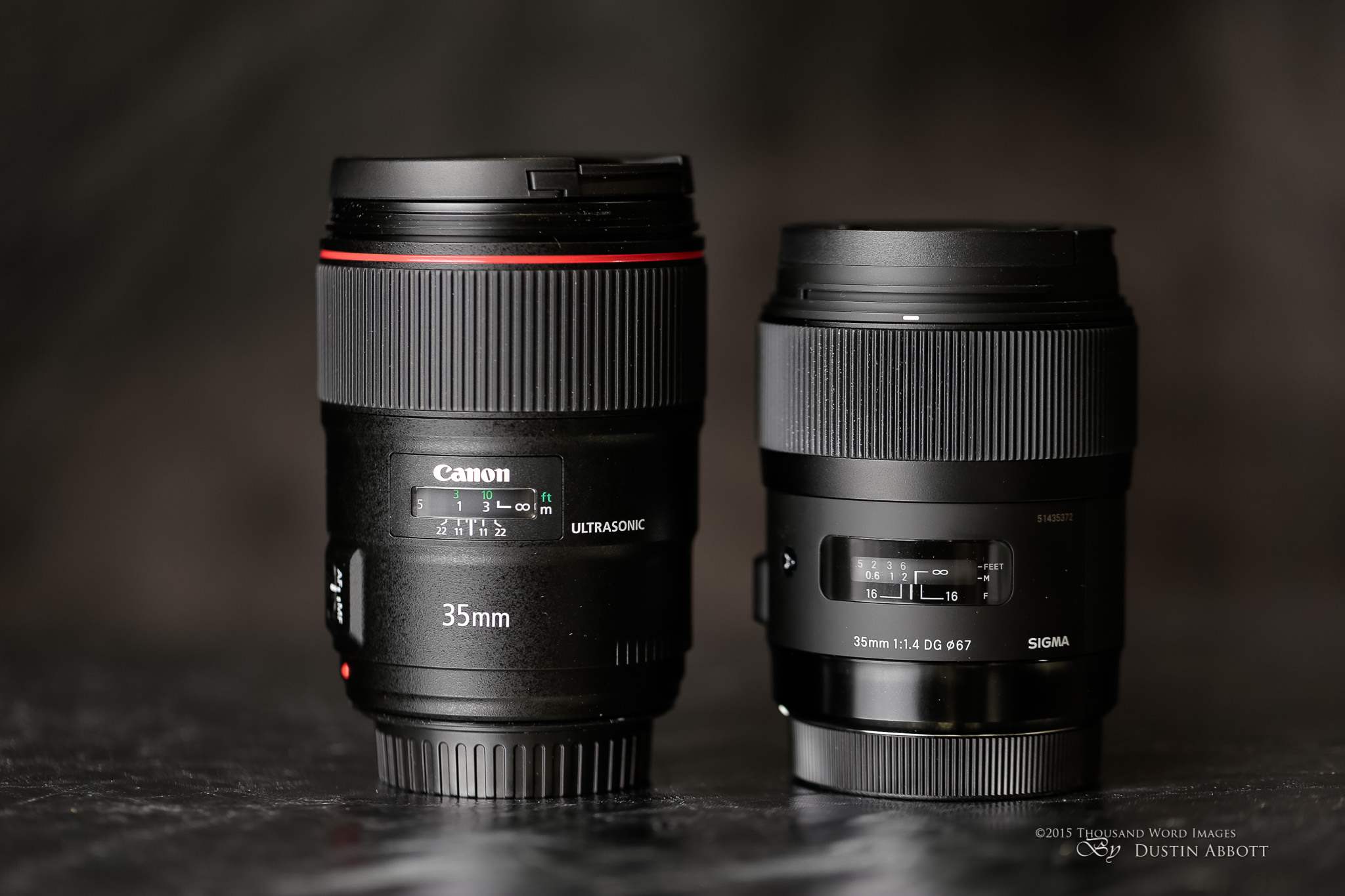





















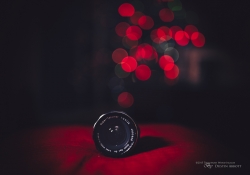

















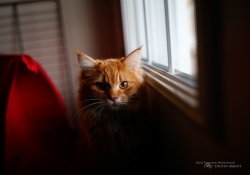





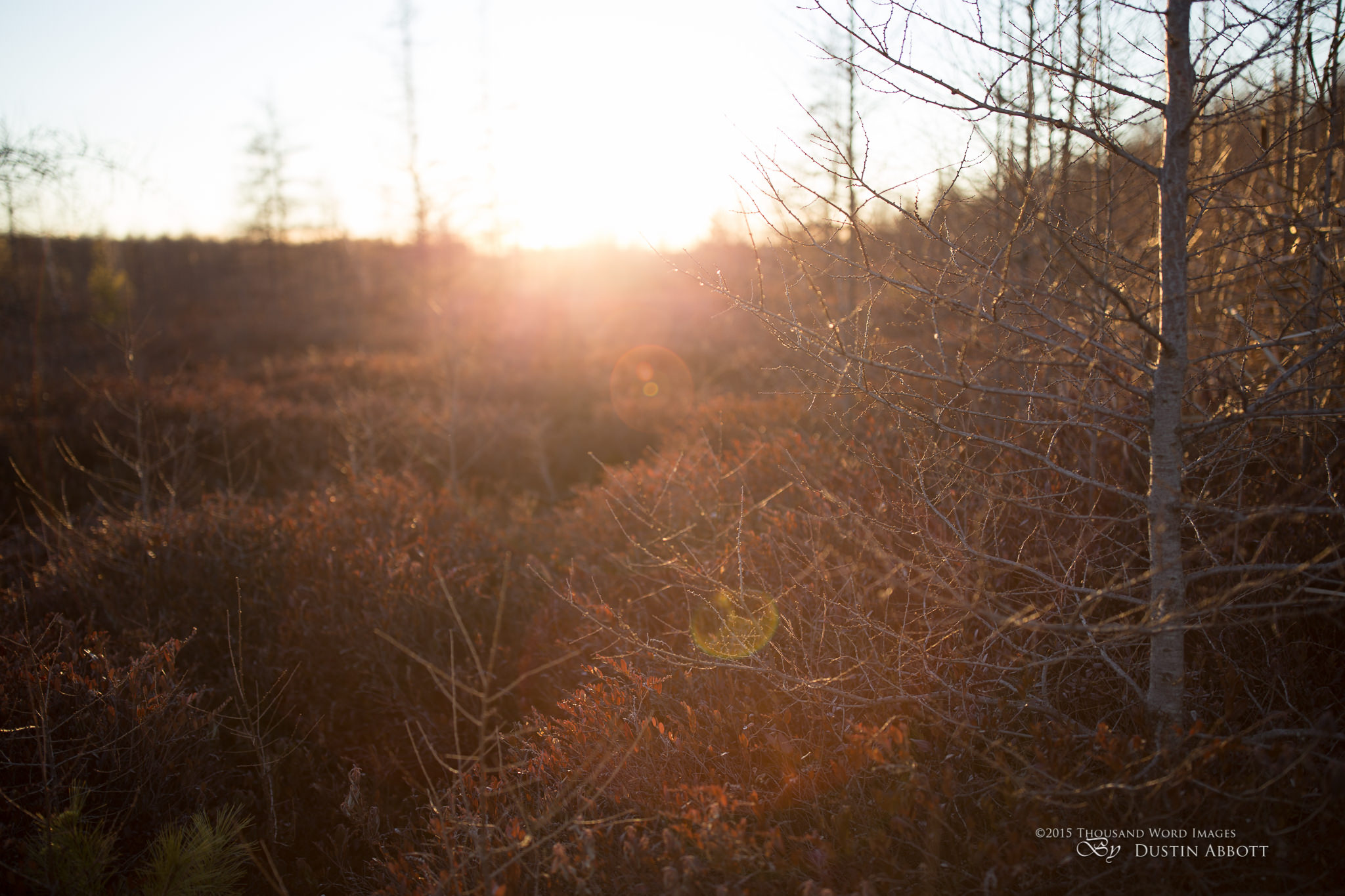
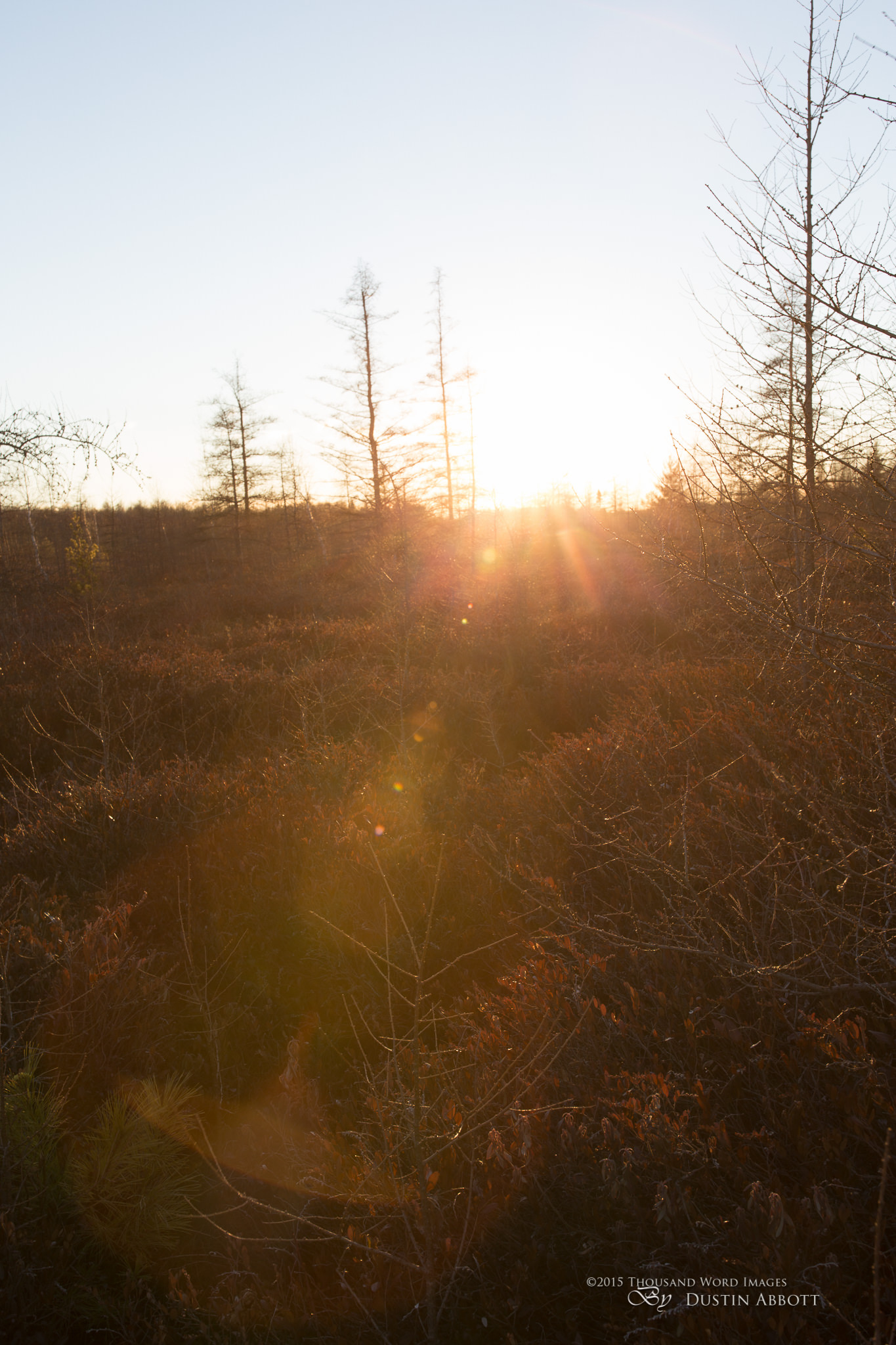

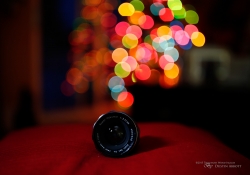
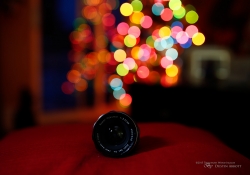
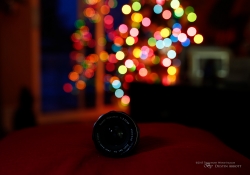
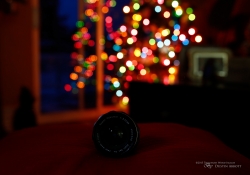

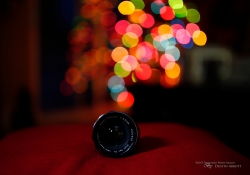
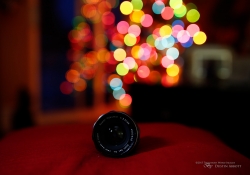
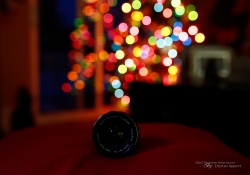

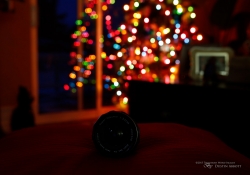
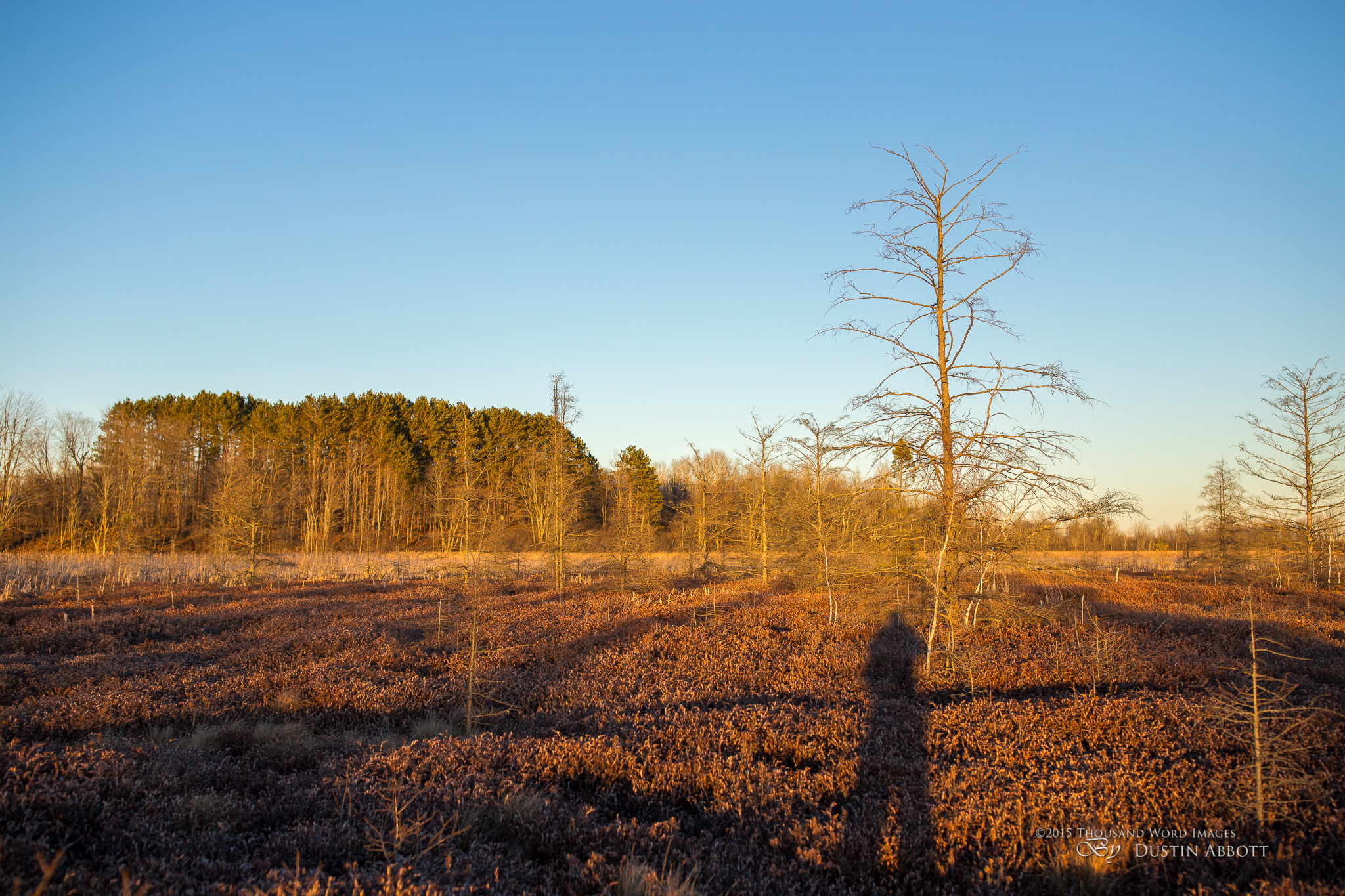



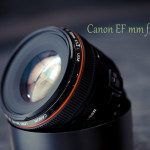
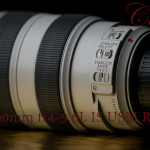
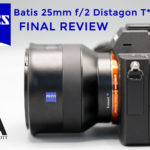

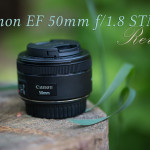



Any chance for a direct shootout with regards to the “drawing” of the 35mm f/1.4 L II and the 35mm f/2 IS? There are some similar photos in each of the respective review galleries but something more controlled would be nice. The extra aperture is nice but at over 3 times the cost. Yikes!
Thank you for a very informative and detailed review. Any interest to test out the Zeiss Distagon ZE 35mm f1.4? It would be very interesting to read your opinions of it. I own ot, and its colour and draving is impressive. God blessings anyway for a new year. 🙂
Nick, I definitely intend to do a few of those before I send the 35L and the Sigma back. I do have a comparison series shot with the Christmas light bokeh. I’ll do a landscape and another general purpose series as well.
FinKK – I’m always interested in testing Zeiss lenses! My next Zeiss review is of the Milvus 1.4/85mm. It sounds very, very interesting.
Okay, that 85mm is very interesting indeed. 🙂 I really want to see the bokeh examples, or how it behaves wide open longer distance; ie does it have the same “medium format look” as the 85mm otus.
You and me both 🙂
What I am commonly amazed at is the steller, glowing reviews about sharpness of a lens only to find that sharpness iis restricted to the center of the photograph . Hard to imagine a more glaring example of this than the Canon EF 35mm L II on Photozone.de . Jaw dropping how bad the lens is off center especially for price and how ground breaking it is in the center. Everyone should see the analysis results at http://www.photozone.de/canon_eos_ff/964-canon35f14mk2?start=1
That said, I really love the care you put in the practical, real world impression of each lens with much more thought than nearly all reviewers. Thanks again !
Peter, I’m not quite sure where they are getting their data, as it isn’t true. The lens is amazing out to the corners. Take a look at this comparison vs. the Sigma 35 ART: http://www.the-digital-picture.com/Reviews/ISO-12233-Sample-Crops.aspx?Lens=994&Sample=0&FLI=0&API=0&LensComp=829&CameraComp=453&SampleComp=0&FLIComp=0&APIComp=0. My real world experience tells me that the resolution of the lens is pretty close to perfect across the image frame.
Thank you for this review Dustin! 🙂
Finally someone that actually tested the AF success rate and confronted to the sigma art. After owning a Sigma (2013 build) and having headaches because of very bad AF accuracy, I was dying to know if buying the Canon it would be possible to resolve this big problem for me.
My girlfriend and me do weddings, family portraits, magazines, … The 35mm is by far the most used lens (ok, not for magazines, but everything else). My girlfriend is the main shooter and she could do a whole 12-14h wedding with it. We used sigma art for more then 2 years and we really like the image quality, but it has a 50% rate to hit focus (we learned to make a lot of reduntant shots because of this) and sometimes is even impossible to achive focus (keeps missing even when repeating the shot). That is why we waited for Canon to release the new 35, just to resolve our problem with AF. Now is the time to go for it 🙂
Thank you once again! 🙂
I also own the 24 1.4 art (new build, 2015). Less problems with AF but still can’t trust it. I heard that the Canon isn’t much better also. And because we don’t use this focal lenght nearly as much as the 35, we accept the AF problem till a better lens comes out. 🙁
Luka, thanks for the feedback. I have found Sigma users to be very aggressive in defending the ART series despite this issue, and many don’t like it brought up. I like Sigma lenses, but the AF consistency is a very real issue.